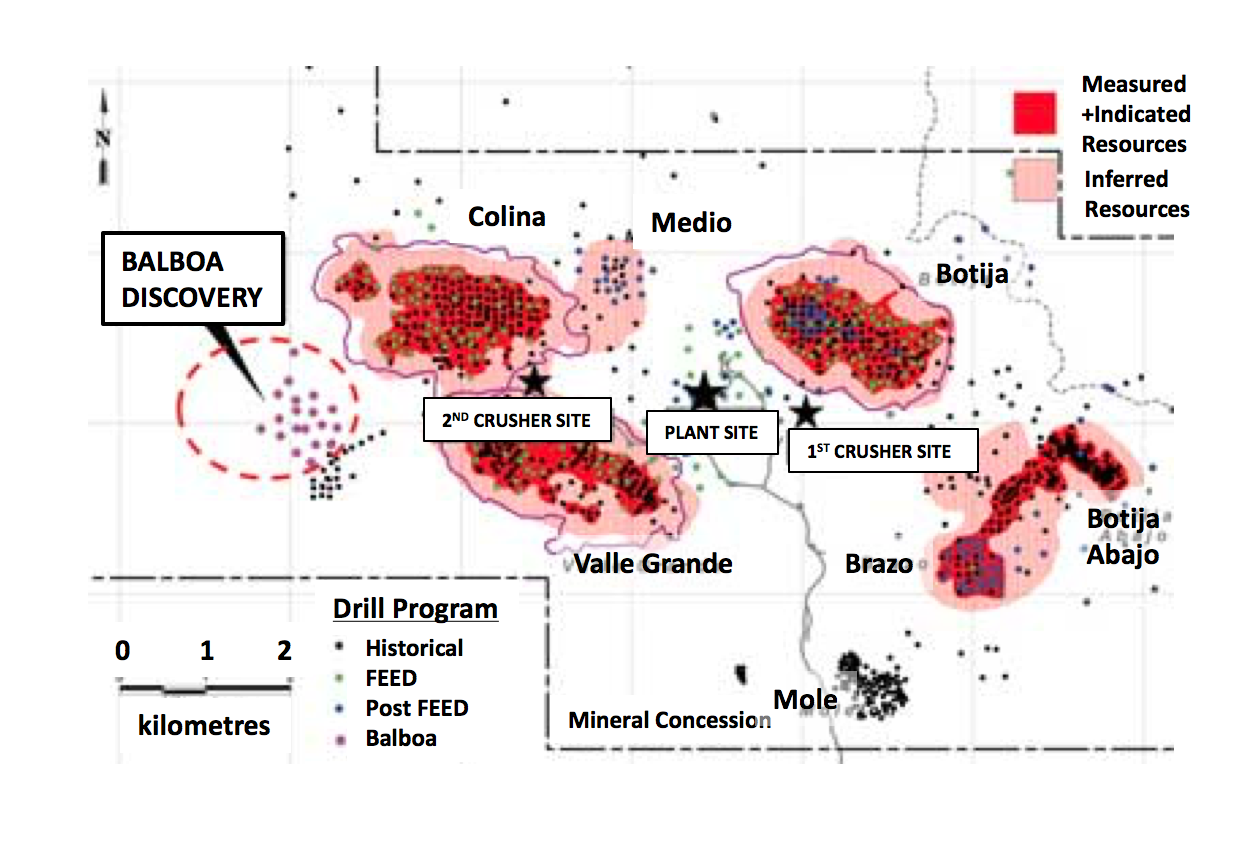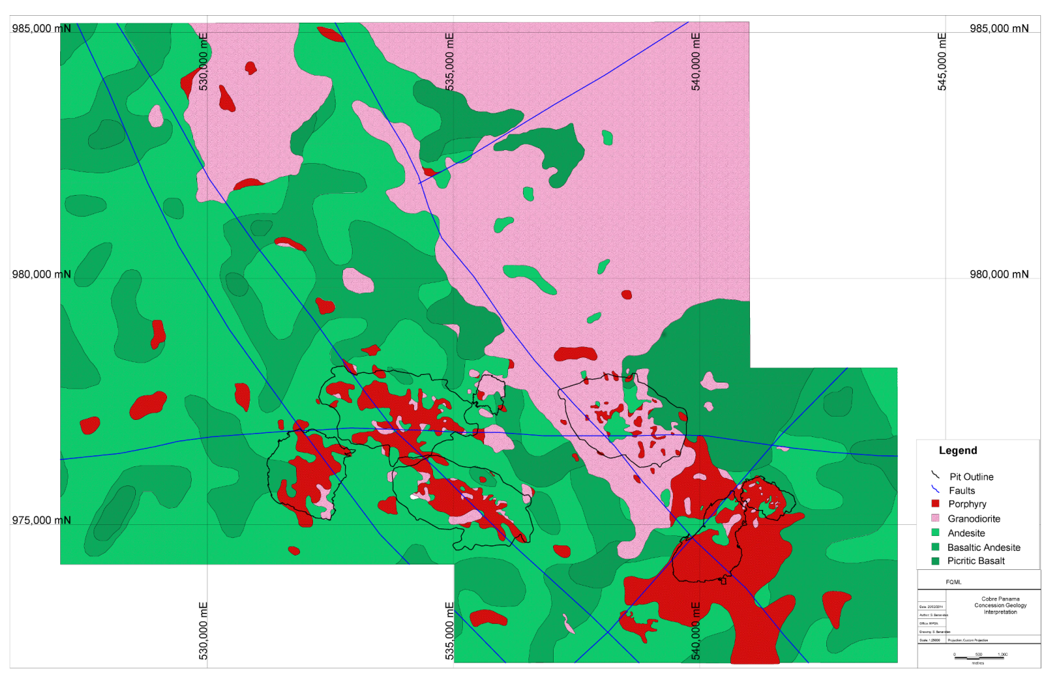Setup
The Balboa deposit is named after the explorer Vasco Nunez de Balboa who travelled across the Panama isthmus to discover the Pacific Ocean in 1513 [Bur14]. Balboa was discovered in 2010 at the Cobre Panama Cu-Mo-Au porphyry project, situated 20 km from the Caribbean coast and 120 km west of Panama City. Balboa is the westernmost of a cluster of six tabular shallowly-dipping, calc-alkaline porphyry copper deposits at Cobre Panama (Fig. 308) that are related to porphyritic intrusions on the southern margin of a granodiorite batholith. Modern exploration at Cobre Panama began in 1966, led primarily by soil geochemistry and drilling. Cobre Panama consists of a measured and indicated mineral resource of 3,695 Mt at 0.37% Cu, 0.006% Mo, 1.3 g/t Ag and 0.07 g/t Au [GLS15]. By 2011, Balboa’s indicated and inferred copper and gold resource had increased Cobre Panama’s total by 19% and 29%, respectively (Engineering & Mining Journal News, 17-April-2012; www.e-mj.com), making it a significant exploration find. Balboa is located just 1 to 2 km from known deposits and measures more than 1,500 by 1,000 m in surface area, yet it escaped detection despite 40 years of exploration, in part due to leaching of copper during the surficial development of 20-30m of clay-rich saprolite in the project area. A property wide ZTEM survey in late 2010 was carried out and follow-up drilling of a ZTEM anomaly led to the blind discovery, lying just 60m below the surface. All of this happened within 3 months after the completion of the ZTEM survey. [Bur14] first presented the Balboa ZTEM discovery and it was subsequently described in [Fis14].

Fig. 308 Porphyry copper-gold deposit outlines in mine plan at Cobre Panama, including Balboa discovery, showing drillhole locations (dots) and distribution of measured + indicated and inferred resources (after [Fis14])
Geology
The Cobre Panama cluster of six copper-molybdenum-gold deposits is distributed over an area of ~10 x 5 km on the southern margin of the Petaquilla batholith Fig. 309. This granodioritic batholith yields U-Pb zircon ages from about 32 to 28 Ma [HB13], with the younger end of the spread playing host to the copper mineralisation. Porphyry intrusions form a continuum from the batholithic composition to a feldspar-quartz-hornblende phase that contains slightly higher grade copper mineralisation. Contemporaneous, fine-grained, weakly magnetic andesite flow units cover much of the area and variably host mineralisation, and barren, post-mineral andesite dikes cut the mineralised porphyries. Since exhumation of the system, a tropical saprolite profile up to 30 m thick has developed. This profile is incised in the drainage valleys, which provide the only rare glimpses of outcrop. The transition from saprolite to fresh rock occurs quite rapidly over a few metres of saprock.
Alteration is mostly chlorite and chlorite-sericite. This overprints potassic alteration, but there are only rare patches of biotite and potassium feldspar alteration preserved. Quartz sulphide ± magnetite A and B veinlets provide widespread evidence of former potassic alteration. Disseminated chalcopyrite, pyrite and magnetite are abundant and often replace mafic phenocrysts with chlorite. Early mineral assemblages are overprinted by phyllic alteration that includes white and green sericite and ubiquitous pyrite with variable silicification or quartz veining.

Fig. 309 Mine lease geology at Cobre Panama from recent compilations and new mapping by First Quantum Minerals. The ultimate pit outlines include Balboa on the western end.